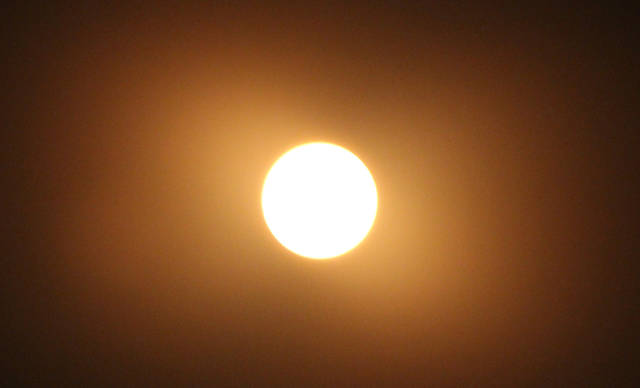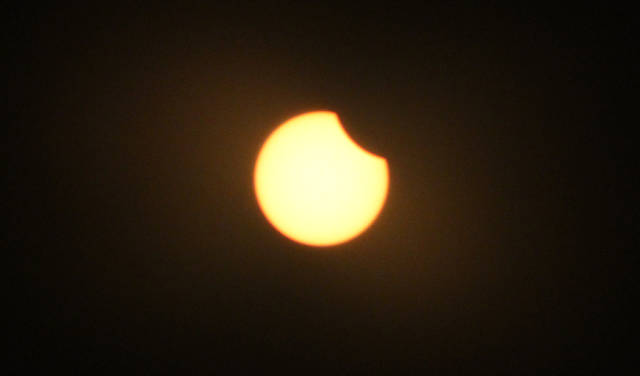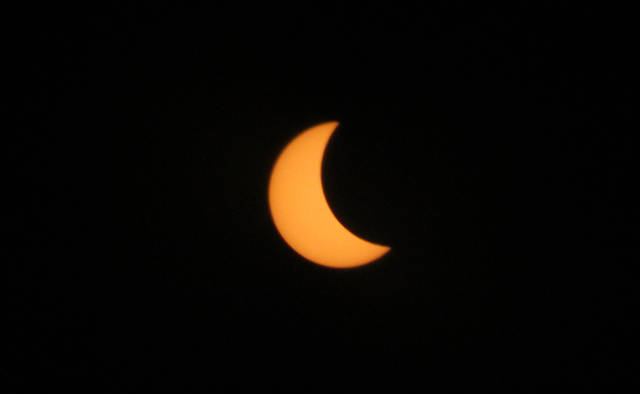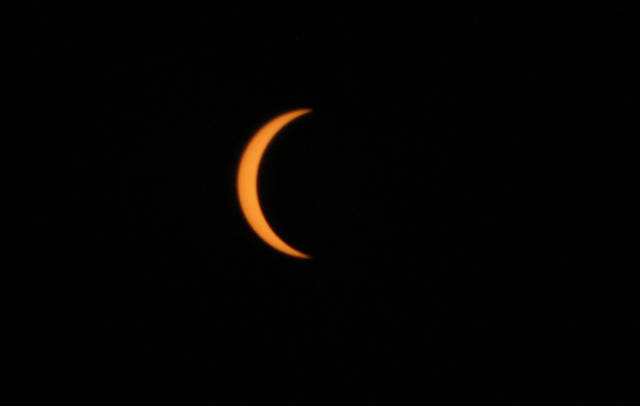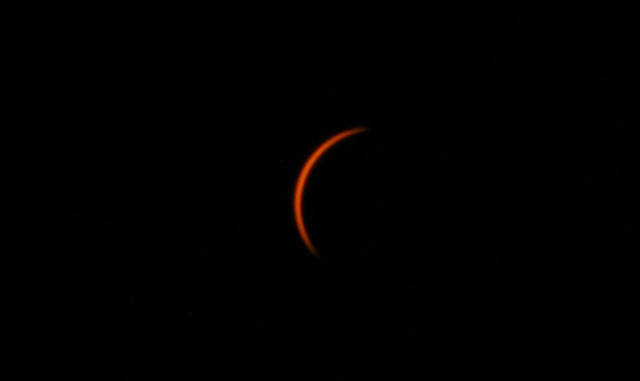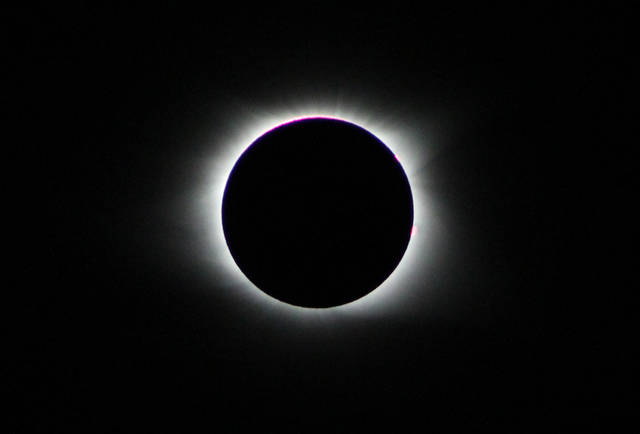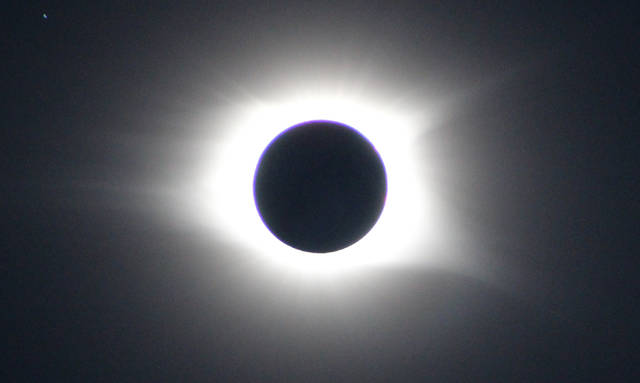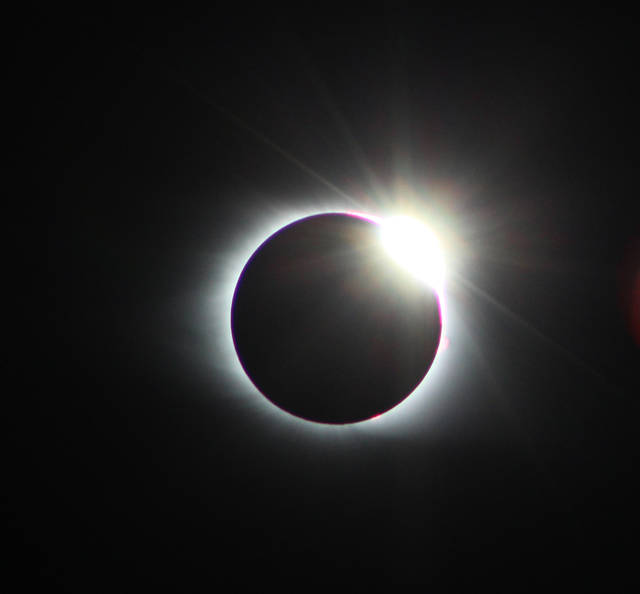SUMTER, S.C. — From coast to coast, it was pure awe.
On Monday, all of the continental U.S. experienced, to some degree, a solar eclipse, a galactic event that has not happened for 99 years.
While Bladen County saw around 96 percent of the sun blocked by the moon, those who wanted to see the spectacular visage that is the sun’s corona had to travel south, as did a large portion of the country.
And they did, in droves. Earlier in the month, North Carolina began urging its travelers to be prepared for heavy traffic, and both Interstate 40 and Interstate 95 were backed up in multiple places — sometimes in excess of 10 miles — since Friday.
Sumter, S.C. — the state’s sixth largest city with a population of around 60,000 — was in an ideal spot to take advantage of the hoopla surrounding the phenomenon. Lying just off of I-95, it is the first large city lying in the path of totality I-95 travelers coming from up north would reach.
Dillon Park — 600 acres of baseball, football, golf, and other recreation facilities — was the site for Sumter’s Solar Eclipse Watch Party. The park that usually sees around 100 visitors per day swelled to the tens of thousands on Monday.
“We planned to start our event at noon, and we thought we might have 10,000 people,” said Lynn Kennedy, event manager. “At 9 a.m., we already had 2,500 cars here. We’ve clearly surpassed what we expected.”
“Every hotel in town was booked up,” said Officer Kearney with the Sumter Police Department. “We’ve never seen this many people in town, even when the President came in the 1990s. It’s been a real boon for the town, without a doubt.”
The once-in-a-lifetime phenomenon attracted people from all over. Kennedy said she knew of guests from Wisconsin, Tennessee, Washington, D.C., New York, and Massachusetts.
Frank and Tootsy Hoffmeyer may have taken the prize for furthest distance travelled. The Vermont couple drove their Winnebago more than 900 miles just to view the eclipse, as they do for every event they can.
“We got married during the 1970 eclipse, and we take them in every chance we get,” the wife explained.
While everyone in the U.S. could see some degree of the eclipse, the millions of people who flocked to the path of totality did so for the chance to view the spectacular phenomena unique to totality. Bailey’s Beads and the sun’s corona, for people like the Hoffmeyers, what make the any trip worth it.
“There’s nothing on earth that can rival the sun’s corona,” Tootsy gushed, obviously in awe. “We’d drive — and we do — any distance for the chance to see it.”
Camping tents dotted the park, as did beach tents and umbrellas, and tailgate parties were abundant. Several of the food vendors ran out of wares, and despite that, lines were long at each one, as were the lines to pick up one of the 10,000 pairs of solar eclipse glasses the town and county had ordered for visitors. During the 1½ hours leading up to totality, guests at the park took advantage of the live music, drone races, bounce houses, food vendors, and face painting, while others played with hackeysacks or Frisbees or lounged under the shade trees.
Throughout the afternoon, guests occasionally stopped what they were doing and donned their solar glasses to gaze at the sky and point upwards as the moon lazily made its way across the face of the sun.
Everything came to a screeching halt at 2:40, however. Not one Frisbee was thrown, not one chair occupied, not one eye was cast down, as the sea of faces turned upward to watch one of — if not the — most spectacular events mankind can see. As the moon passed completely in front of the sun, and light could no longer be seen through solar glasses, one by one, the paper filters fluttered to the ground.
At that moment, like the calm before a storm, a collective gasp was heard, as if the tens of thousands of people were seeing something they were not prepared for. For a few seconds, silence and utter awe. Then the cheering began, a mounting wave as observers regained their breath and composure. Not all did, though, and some simply wept. No one, however, could take their eyes off the sky.
Visible only to the naked eye, a crisp circle of pure white light as the diamond ring effect formed as the rugged terrain of the moon allowed some light around its edges. At first, a particularly bright spot on the southeastern edge of the sun, when added to the ring, gave the appearance of a bright diamond ring. As the bright spot disappeared, the sun’s corona — a bright aura radiating from the sun — was visible. As the moon moved to the southeast, another diamond appeared on the southwest edge of the moon, Bailey’s Beads visible again. All of it was the brightest and purest of lights.
In all, totality lasted in Sumter for one minute and 20 seconds, but for some, it was a life-changing moment.
“I’ll never forget it,” said one observer through tears. “I don’t think I’ll ever see anything that beautiful again.”
“I’ve lived a long time,” commented John McElroy, 93, who came south for his first and “probably (his) last” total eclipse, “and this will go down as one of the best experiences of my life.”
“Now you see why we drive wherever we need to in order to see totality,” said Frank. “It’s worth it.”
Solar eclipses, according to NASA, occur about twice every year, but the majority of them cast shadows on the ocean and are not seen. Statistically speaking, any geographical location will experience totality once every 100 years.
The next total solar eclipse visible in the U.S. will occur in 2024, when totality will be seen on an arc stretching from Maine to southern Texas.
Chrysta Carroll can be reached by calling 910-862-4163 or emailing ccarroll@s24515.p831.sites.pressdns.com.
